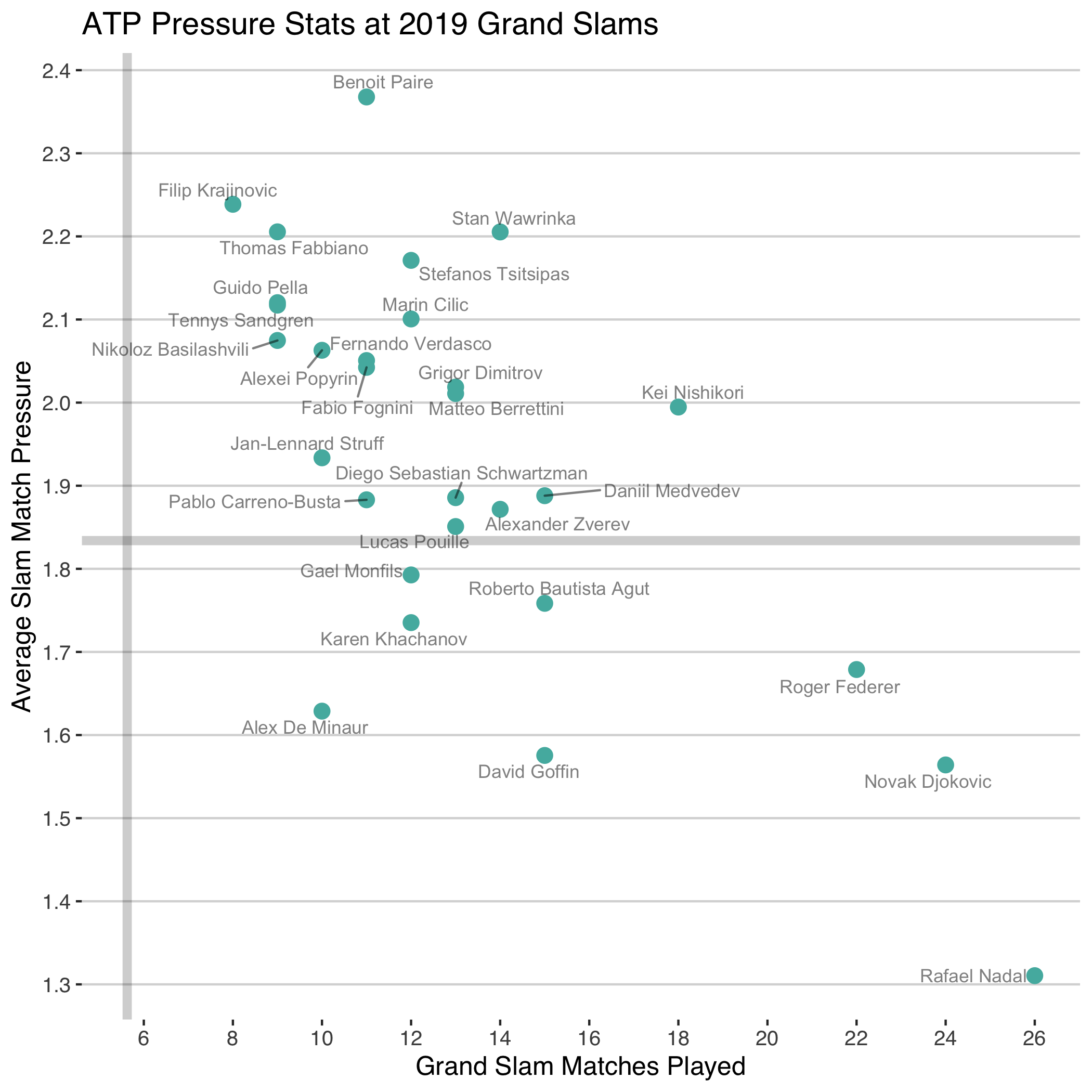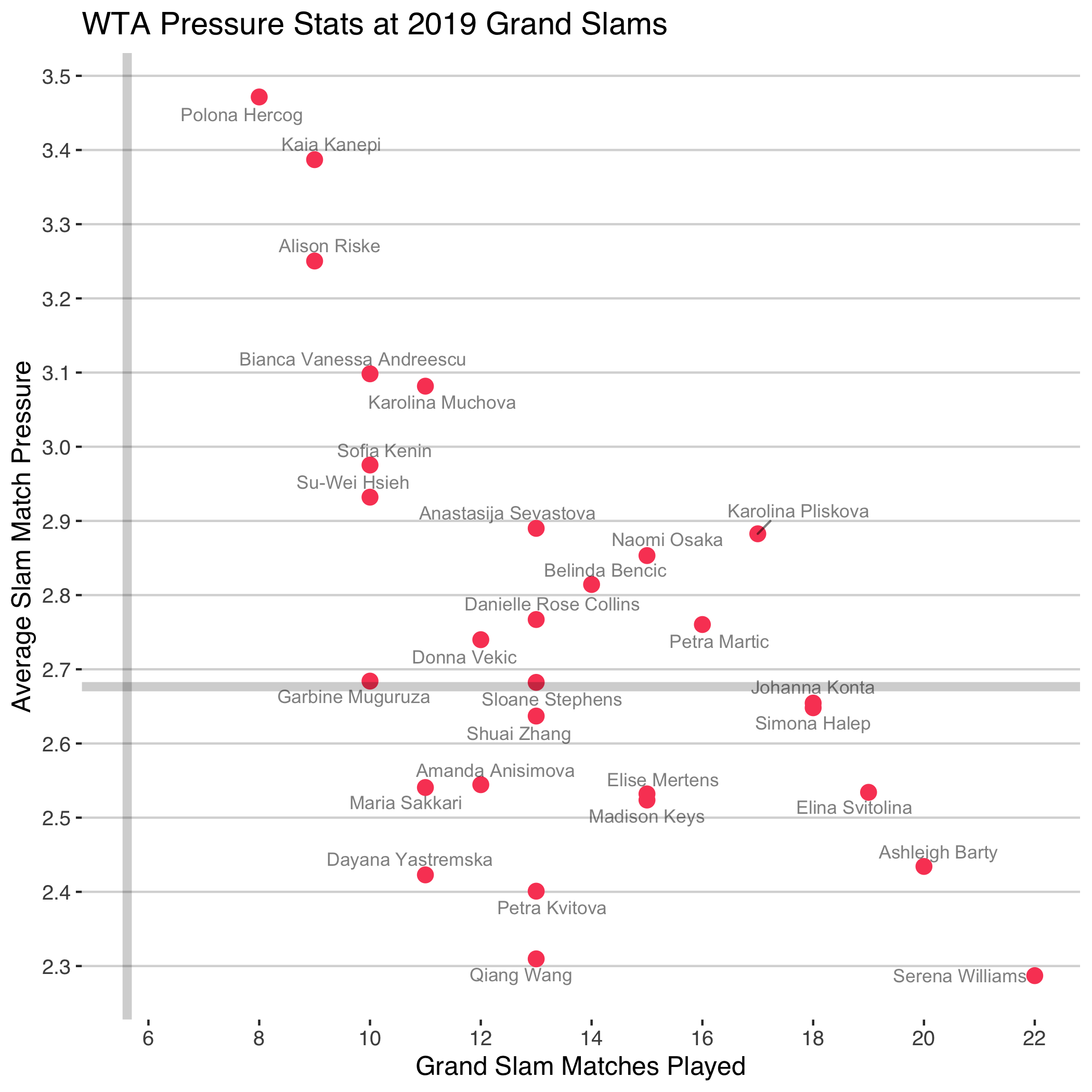Who Felt the Pressure the Most at the 2019 Grand Slams?
With the Grand Slam calendar for 2019 now at a close, which players faced the greatest challenges at the majors? And which achieved the most under extreme pressure?
How a player responds in close matches on the biggest stages can say a lot about their character. Whose character was put to the test the most at the Grand Slams this year?
We can get a sense of that by looking at the players who experienced the highest average match pressure across the Grand Slams. Here, each point’s pressure is simply the leverage of the point (or point importance), as I’ve gone into in-depth before. Players with a higher average pressure are the ones who had tighter sets and had to go to 4 or 5 sets more often than others.
Below is a plot of the average slam match pressure for ATP players. This is plotted against the total matches played, which also tells us about the players who went deeper in the events. To focus on the more successful players, only the ones who were in the top 20% of matches played are shown.

The first thing we notice from this plot is the negative correlation between average pressure faced and total matches played. This make sense when we consider that the total matches is directly related to a player’s ability. Stronger players should tend to have easy initial rounds, bringing down their average match pressure.
The players that are particularly interesting in this case are those who have an unusually high average pressure for the same matches played. Take Daniil Medvedev, for example, who had the highest average pressure faced among players who played a total of 15 matches at the majors this year. His average of 1.9% pressure per point was more typical of players with only 12-14 matches played.
Another interesting case is Stan Wawrinka, who lands in the top 5 of the highest average pressure with an average of 2.2%. But he is several matches ahead of those other players in terms of the total matches played. Stefanos Tsitsipas and Marin Cilic are in a similar situation: high-ability players who some how found themselves having to fight through more tough matches than their ability might have predicted.
On the women’s side the negative correlation is an even stronger pattern, with higher pressure being more of the norm in general owing to the ‘best of 3’ format.

Some of the standout players in this group are Karolina Pliskova and Naomi Osaka, who each have higher than typical pressure for the number of matches they faced. Bianca Andreescu is also a bit of a surprise though her slam season was a bit incomplete owing to injuries that forced her out of Roland Garros and made her miss Wimbledon entirely.
It’s curious to see more of a cluster of women players that have lower than expected pressure averages. Look at Petra Kvitova, for example, whose match total would have predicted her to have an average pressure closer to 2.7 to 2.8%. Her actual average of 2.4% seems attributable to being really dominant in early rounds, especially at the Australian Open, while getting shutdown early at other events, like the US Open. So this could be the sign of a player who had a more up-and-down season than others.
I think the pressure stats can give us a different perspective into the challenges players felt at the big events and how they might look back at them going into the next season. I think it will be especially interesting to see how players like Pliskova or Wawrinka, who did well overall in the face of more than average pressure, will build on those experiences going into the 2020 season.

